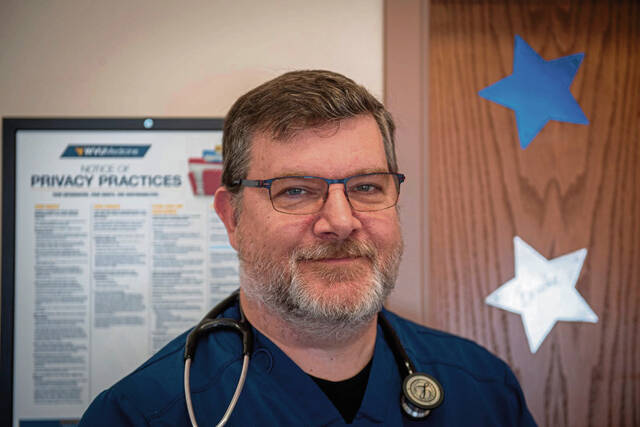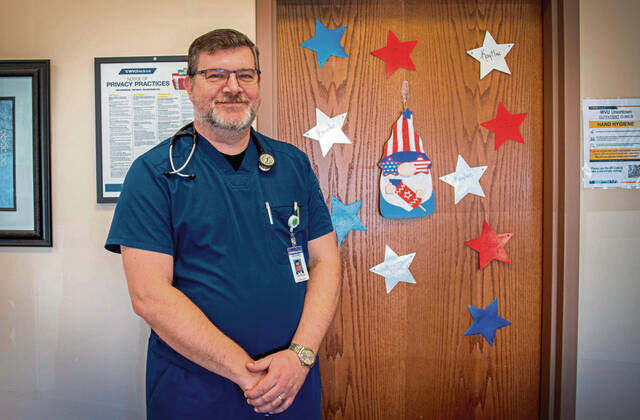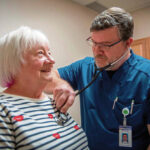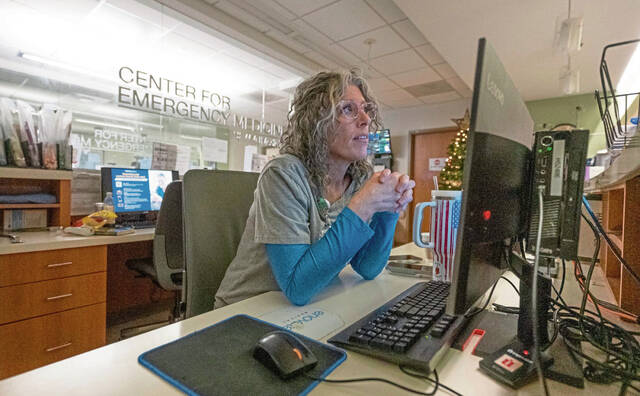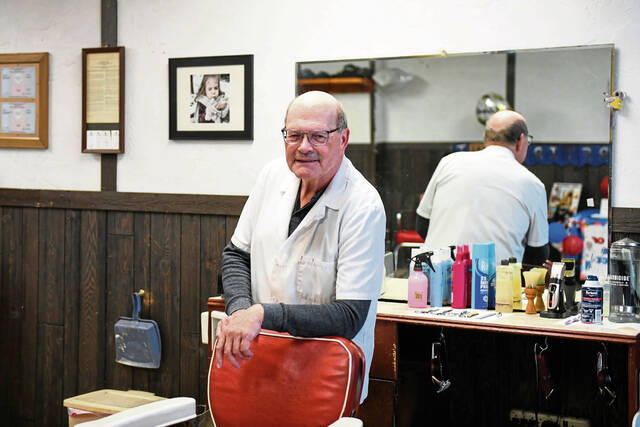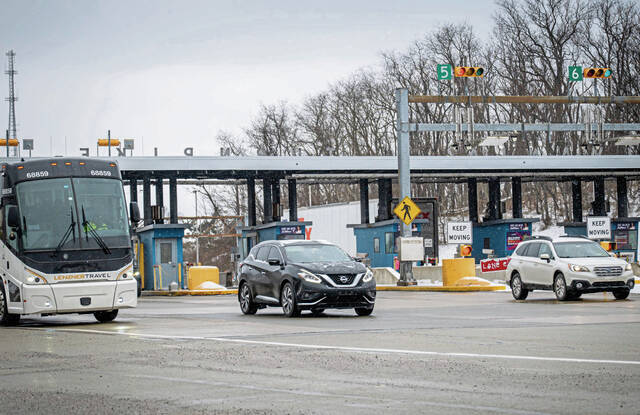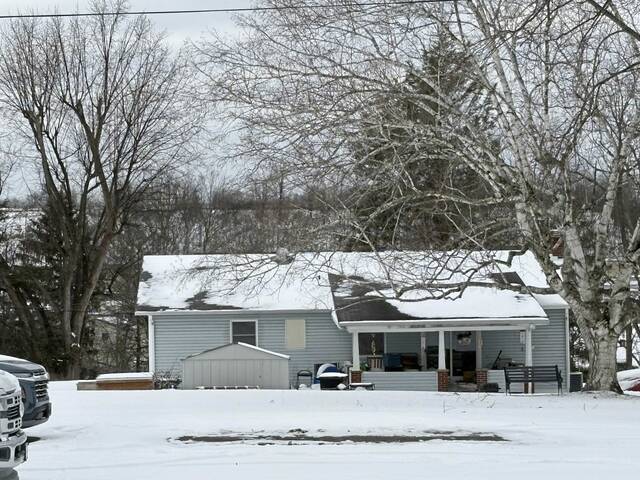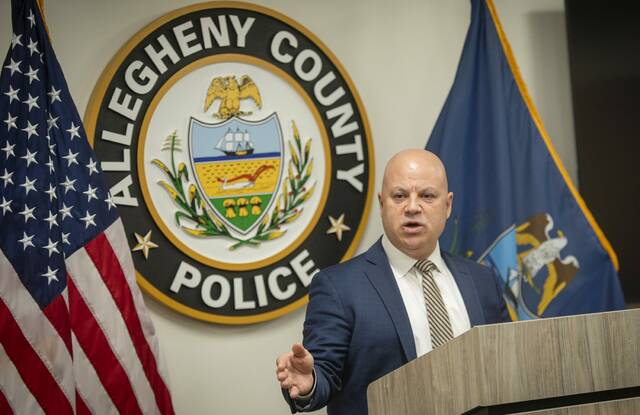Dr. Richard Conn is well-versed in the challenges of providing health care in rural areas. The primary care physician has been seeing patients in Connellsville for the past 19 years.
“For some (patients), preventive care is foreign to them. There’s a hesitancy to do things,” said Conn, 52, a Fayette County native. “They decline to do diagnostic testing. They don’t want to know (possible bad news). They don’t want to see a doctor unless they are seriously ill.”
Rural health care, from primary care physicians to hospitals, is in the eye of a perfect storm of challenges: a shortage of treatment professionals, limited infrastructure and resources, potential cuts to Medicaid coverage and a payment system that falls short of the cost of care.
“Rural health care is in jeopardy right now,” said Dr. Valerie Arkoosh, secretary of the state Department of Human Services, during a recent Western Pennsylvania Regional Rural Health Summit at Indiana University of Pennsylvania.
There’s a shortage of health professionals in parts of most counties in Western and Central Pennsylvania, including Allegheny, Armstrong, Butler and Westmoreland, according to the Rural Information Hub, a data repository supported by the U.S. Department of Health and Human Services.
It’s even worse in Indiana and Cambria counties, where the entire area has a shortage of health professionals, according to the Rural Information Hub. Nine counties, most of which are in the northern tier of the state, are without a hospital, according to the Hospital and Healthsystem Association of Pennsylvania, a statewide trade association representing 235 hospitals.
“It’s (lacking) the full spectrum of care, but it is really lacking at the primary care (level), dental care, maternity care and specialty care,” said Lisa Davis, director of the Pennsylvania Office for Rural Health at Penn State.
Health professionals find that those communities tend to have a patient population with “very, very unique needs … with a higher burden of diseases and higher socioeconomic needs,” said Dr. Ziad Dimachkie, chief medical officer at WVU Medicine Uniontown Hospital.
“Preventive care can be seen as a luxury — a luxury of time and luxury of financial resources” that those patients can’t afford, Dimachkie said.
Ignoring or putting off routine preventive care can lead to other, more serious health complications, adding another set of problems to the equation.
Providing health care in rural regions is all the more challenging because areas with smaller populations are not concentrated in just one section of the state. Forty-eight of the state’s 67 counties are considered rural by the Center for Rural Pennsylvania, which is defined as a county with fewer than 291 people per square mile. Almost 3.4 million residents, or 26% of the state’s population, live within those rural counties.
“We are a state within a state. It is a very important population that is bigger than some states,” said Laura Dimino, assistant director of the state Office for Rural Health.
Geographic isolation
Access to care is a big issue for Conn’s patients.
Elderly patients may be hesitant to drive, and others don’t have private transportation. Getting a patient to drive 13 miles from Connellsville to Uniontown Hospital for specialized tests is difficult. Getting them to go to one of the major hospitals in Pittsburgh is simply a trip too far in their minds, he said.
“Geographic isolation, road conditions — especially in winter — and distance … create barriers to care and potential health status,” said Davis, an outreach associate professor of health policy and administration at Penn State.
Hospitals have opened primary care clinics in communities to meet patients halfway, so to speak.
“These locations are a vital link to primary care for many who might not have immediate access to providers based on the network’s hospital campuses,” according to a prepared statement from the Pennsylvania Mountains Care Network, which consists of Armstrong County Memorial Hospital in Kittanning, the Indiana Regional Medical Center and Punxsutawney Area Hospital.
UPMC Somerset hospital has placed clinics in areas where there is a lack of providers, said Andrew Rush, president of UPMC Somerset, as well as UPMC East in Monroeville and UPMC McKeesport.
Attracting practitioners
One of the greatest barriers for rural health systems is attracting a sufficient number of health care professionals in all roles and in all hospitals, said Nicole Stallings, president of the Hospital and Healthsystem Association of Pennsylvania.
Rural areas in Pennsylvania have one primary care physician for every 586 residents, compared with one per 222 residents in urban areas, according to the state Office of Rural Health.
Rural systems compete with urban systems for the already-limited supply of physicians, nurses and pharmacists, said Ken DeFurio, president and CEO of Independence Health System operating hospitals in Westmoreland and Butler counties. And then they compete with employers in other fields as well.
“You’re competing for a finite labor force,” said state Sen. Majority Leader Joe Pittman, R-Indiana.
Added Dimachkie of WVU Medicine Uniontown Hospital: “We have to incentivize our workforce to go to rural places to work.”
A loan repayment program could be one way to attract physicians who might face student loan debt of between $250,000 and $300,000, Dimachkie said.
The state health department offers an educational loan repayment program for physicians, dentists and psychologists who serve in the federally designated Health Professional Shortage Areas, defined as geographic areas, populations or facilities that have a shortage of those providers. A two-year commitment can get a practitioner $80,000 repaid on their loan. The governor’s budget has proposed $5 million to expand the loan repayment program in 2025-26.
Health care practitioners who want to work in a rural area typically have a family connection or an affinity for an outdoors lifestyle, said Dimachkie, who also serves as the associate chief quality officer for Morgantown-based West Virginia University Health System.
Conn, the Connellsville practitioner, graduated from Frazier High School in Perryopolis and said he wanted to stay local. He completed his residency at the former Latrobe Hospital and aimed at practicing near his hometown.
Having grown up in Dawson, a borough with a few hundred residents, Conn said he understands his patients and can find ways to relate, whether through discussions about farming or the truck that he drives.
“Once we have that relationship, you can get around to talking about the (health) problem,” he said. “There’s genuine concern. That’s important to them.”
Issues facing rural hospitals
More than half of the state’s acute care hospitals are operating at a loss, according to the most recent data from the Pennsylvania Health Care Cost Containment Council, and a third have experienced multiyear losses, said Stallings, of the Hospital and Healthsystem Association of Pennsylvania.
This financial stress is particularly difficult on rural hospitals, which are further challenged when uninsured patients or those who put off seeking medical care turn to the emergency room department for treatment — care that is more expensive to provide, said Davis of the Office of Rural Health.
Rural hospitals also are faced with a higher percentage of patients covered by government insurance programs that are paying at or below costs for the treatment, Dimachkie said.
Reimbursements from Medicaid, a public health insurance program for low-income Americans that covers about 1 in 5 Americans, cover just 74 cents for every $1 that hospitals spend on treating a patient, Stallings said.
Possible cuts to Medicaid, being considered by Congressional Republicans as a means to slash expenditures to fund President Donald Trump’s agenda, could further exacerbate the issue.
“The future of Medicaid is at risk,” Stallings said. “Any cuts to federal funds would have an immediate impact on rural health care and the financial cash flow for rural hospitals.”
It’s unclear how a possible reduction in Medicaid funding might impact Pennsylvanians, Arkoosh said. About 3 million residents — roughly 23% of the state’s population — are covered by Medicaid, he said. Of that number, 330,000 are children.
In order to stay viable, some rural hospitals have pursued mergers and relationships with other health care systems.
• Somerset Hospital joined Pittsburgh-based UPMC’s network in 2019, giving it access to a larger health system and technology for patients, said Rush, the hospital president. Joining UPMC brought Somerset economies of scale that it alone could not achieve when it came to purchasing equipment and supplies, Rush said. It also allowed for cost savings in the business office and human resources.
• Greensburg-based Excela Health System, with hospitals in Greensburg, Latrobe and Mt. Pleasant, joined the Butler Health System, with hospitals in Butler and Clarion, to form Independence Health in 2023.
• Monongahela Valley Hospital in Washington County has turned to join Penn Highlands Healthcare, which consists of six hospitals in Brookville, Clearfield, DuBois, Elk County, Huntingdon and Tyrone.
• Indiana Regional Medical Center is affiliated with the Pennsylvania Mountains Care Network’s Armstrong County Memorial Hospital and Punxsutawney Area Hospital.
“The economics of health care put tremendous strain on our hospitals, our employees and our patients,” said DeFurio, of Independence Health.
The strain is severe enough that Independence Health lost $41.4 million from operations in the 2024 fiscal year that ended June 30. Of that loss, Butler Health System accounted for $29.8 million and Excela Health System, $11.6 million.
The state has provided $10 million for rural hospitals in the current fiscal year and was able to leverage another $27 million in federal matching funds, said Arkoosh, the secretary of the Department of Human Services. Another $10 million is in the governor’s budget proposal for the upcoming 2025-26 fiscal year to leverage another $25.1 million in federal matching funds.
The administration also has proposed $10 million for health care facilities statewide, Arkoosh said.
Said Indiana Regional President Steve Wolfe, “We need a fundamental shift in the way health care is delivered and paid for.”



